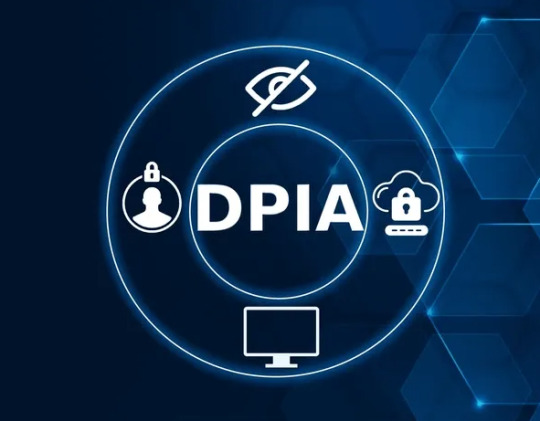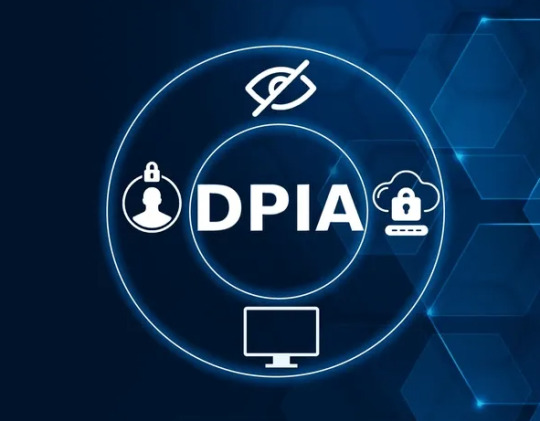DPIAResearch.eu is an independent academic repository of Data Protection Impact Assessments, offering transparent resources and expert GDPR consulting for organisations facing complex data privacy challenges.Read more:- https://dpiaresearch.eu
Don't wanna be here? Send us removal request.
Text
Mastering Data Privacy: Essential DPIA Templates and Tools for GDPR Compliance
In today’s data-driven environment, the protection of personal data is more critical than ever. With regulations like the General Data Protection Regulation (GDPR) enforcing strict compliance standards, organizations must proactively assess how their operations impact individual privacy rights. This is where Data Protection Impact Assessments (DPIAs) — supported by robust templates and automation tools — become indispensable.
What Is a Data Protection Impact Assessment (DPIA)?
A Data Protection Impact Assessment is a structured, methodical process used to identify, assess, and mitigate risks related to the processing of personal data. Under the GDPR, DPIAs are mandatory for high-risk processing activities. Beyond legal compliance, they demonstrate a commitment to ethical data stewardship and help avoid regulatory penalties.
Why Use a DPIA Template?
A well-structured DPIA template ensures a standardized approach to privacy risk assessments. It guides teams through essential components such as:
Project Overview: Clarifying the scope and nature of the processing activity.
Purpose of Processing: Identifying the reasons for data collection and intended use.
Risk Assessment: Evaluating potential impacts on the rights and freedoms of data subjects.
Mitigation Measures: Defining strategies to reduce identified risks to acceptable levels.
Using a DPIA template ensures comprehensive coverage, promotes transparency, and provides a clear audit trail — essential during regulatory reviews or internal compliance checks.
Key Features of an Effective DPIA Template
When selecting or designing a DPIA template, look for features that enhance accuracy, consistency, and usability:
Customizable structure adaptable to various types of data processing activities.
Step-by-step guidance for collecting relevant information and assessing risks.
Integration with automation tools, including built-in risk scoring and data validation.
Alignment with GDPR and related privacy frameworks.
A strong template not only facilitates smoother DPIA execution but also improves internal collaboration and regulatory readiness.
Enhancing Compliance with DPIA Automation Tools
While templates provide a structured framework, DPIA tools offer digital capabilities to streamline and scale the assessment process. These tools automate workflows, reduce manual errors, and enable real-time collaboration across compliance teams.
Benefits of DPIA Tools
Process Automation: Minimizes human error and ensures consistent implementation.
Real-Time Risk Scoring: Instantly flags high-risk activities for review.
Collaborative Workflows: Enables cross-functional teams to contribute simultaneously.
Audit-Ready Reporting: Tracks decisions, maintains logs, and ensures GDPR accountability.
With the right tools, organizations can conduct DPIAs more efficiently while maintaining the integrity and accuracy of each assessment.
Leading DPIA Tools on the Market
Several leading solutions are available to support organizations of all sizes:
OneTrust DPIA: Offers customizable templates, automated risk scoring, and integration with broader privacy management platforms.
TrustArc: Known for streamlined workflows and detailed reporting features.
DPOrganizer: Tailored for small to mid-sized businesses, with real-time dashboards and intuitive interfaces.
DataGrail: Designed for enterprises focused on embedding privacy into broader data governance programs.
Each of these tools enhances the efficiency and effectiveness of DPIA execution while helping maintain GDPR compliance.
The Power of Combining Templates and Tools
For optimal results, organizations should adopt both a DPIA template and a DPIA tool. While the template ensures consistency and thoroughness, tools provide scalability, traceability, and real-time risk visibility. Together, they:
Enable early identification and resolution of privacy risks.
Strengthen accountability across departments and stakeholders.
Enhance organizational control over personal data and processing operations.
Promote a "privacy by design" culture throughout the project lifecycle.
Who Should Use DPIA Resources?
These resources are essential for:
Data Protection Officers (DPOs)
Compliance and Legal Teams
IT and Security Professionals
Project Managers and Business Owners
A consistent DPIA process ensures every stakeholder plays a part in safeguarding personal data and upholding privacy rights.
Final Thoughts
As public concern around privacy grows and regulatory scrutiny intensifies, organizations must take proactive steps to protect personal data. By leveraging structured DPIA templates and powerful DPIA tools, companies can not only meet GDPR requirements but also embed trust, transparency, and resilience into their data governance strategies.
Explore ready-to-use DPIA templates and cutting-edge tools at DPIAResearch.eu — your go-to hub for privacy professionals committed to getting compliance right from the start.

0 notes
Text
Privacy Impact Assessment guidance, PIA Guidance
Practical Privacy Impact Assessment (PIA) resources from international Authorities: step‑by‑step guidance, frameworks, and templates to support people's privacy rights.
Read More:-Privacy Impact Assessment Guidance

0 notes
Text
DPIA Research - A collection of primary documents which show how Data Protection Impact Assessments are created
DPIAResearch.eu is an independent academic repository of Data Protection Impact Assessments, offering transparent resources and expert GDPR consulting for organisations facing complex data privacy challenges.

0 notes
Text
Privacy Impact Assessment guidance, PIA Guidance
Practical Privacy Impact Assessment (PIA) resources from international Authorities: step‑by‑step guidance, frameworks, and templates to support people's privacy rights.

0 notes
Text
Understanding ISO 31000 and Data Protection in the Context of COVID Proximity App DPIAs
Risk Management and Privacy in the Age of Digital Health
As governments and organizations embraced digital proximity tracking to manage the spread of COVID-19, data privacy and risk governance emerged as critical issues. The integration of ISO 31000 risk management standards and robust Data Protection Impact Assessments (DPIAs) played a vital role in ensuring responsible development and deployment of these technologies.
What Is ISO 31000?
ISO 31000 is an international standard that provides principles and guidelines for effective risk management. It supports organizations in identifying, analyzing, and addressing risks, including those related to the processing of personal data.
In the context of COVID proximity apps, ISO 31000 offers a clear framework for:
Identifying and managing privacy and operational risks
Embedding risk assessments into decision-making processes
Adopting a proactive approach to data protection and compliance
Privacy Challenges of COVID Proximity Tracking Apps
To manage virus exposure, many countries implemented proximity tracing apps that collect sensitive data such as location, contact history, and health status. These efforts, while beneficial for public health, triggered significant privacy concerns.
To address these, developers were required to conduct DPIAs, especially under the General Data Protection Regulation (GDPR) and similar frameworks. DPIAs help ensure data processing is justified, proportional, and compliant.
Why COVID Proximity App DPIAs Are Essential
DPIAs are essential to:
Identify risks to individuals’ rights and freedoms
Recommend appropriate mitigation strategies
Demonstrate accountability and transparency
Given the sensitivity of the data involved, these DPIAs must assess not only technical risks but also ethical and social implications.
Integrating ISO 31000 into DPIAs for COVID Apps
Merging ISO 31000 with DPIAs offers a powerful, dual-layered approach to privacy governance. The relationship between the two frameworks includes:
Risk Identification: ISO 31000 encourages broad risk awareness. In DPIAs, this translates into evaluating risks like consent misuse or unauthorized profiling.
Risk Analysis: Both assess the likelihood and impact of adverse events, such as data breaches or misuse of health information.
Risk Mitigation: Common controls include data minimization, encryption, and access limitations.
This integrated approach aligns with Privacy by Design principles and encourages a sustainable privacy culture.
European Case Studies: DPIAs in Action
Several European countries effectively applied DPIAs using ISO-aligned strategies:
Germany’s Corona-Warn-App: Launched with a publicly disclosed DPIA, focusing on user anonymity and data minimalism.
UK’s NHS COVID-19 App: Initially criticized for a lack of transparency, but later improved with revised DPIAs and privacy-centric updates.
These examples underscore the importance of early and transparent privacy risk assessments.
Challenges in Implementing DPIAs and ISO 31000
Despite their benefits, organizations face practical challenges:
Limited public awareness of privacy rights
Pressure to deploy apps quickly during crises
Variability in national legal frameworks
These challenges highlight the importance of establishing consistent, formal risk management and privacy assessment processes.
Conclusion: Embedding Risk and Privacy in Digital Innovation
The convergence of ISO 31000 and DPIAs in proximity apps demonstrates the value of a structured, privacy-first approach to technology deployment. As digital tools become increasingly embedded in public services, these methods will remain essential for maintaining trust, protecting rights, and ensuring compliance.Looking for more guidance on DPIAs, ISO 31000, and emerging tech risks? Visit DPIAResearch.eu — the dedicated hub for data protection professionals and privacy engineers.

0 notes
Text
Privacy Impact Assessment guidance, PIA Guidance
Practical Privacy Impact Assessment (PIA) resources from international Authorities: step‑by‑step guidance, frameworks, and templates to support people's privacy rights.
Read More:-Privacy Impact Assessment

1 note
·
View note